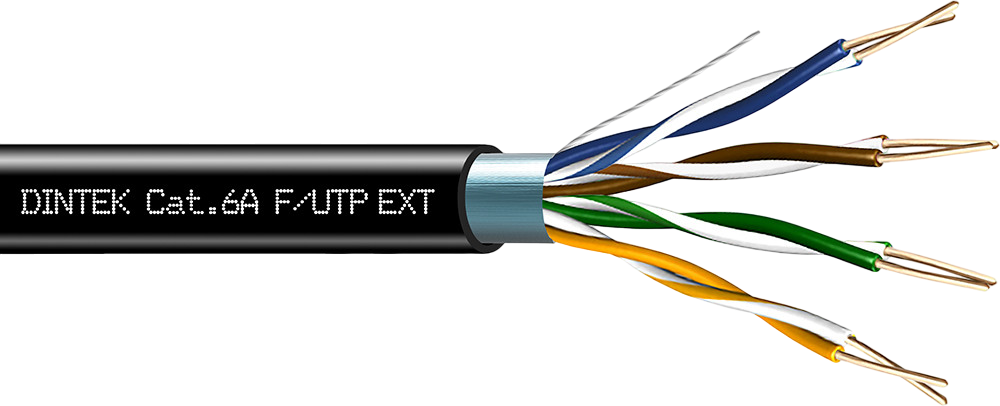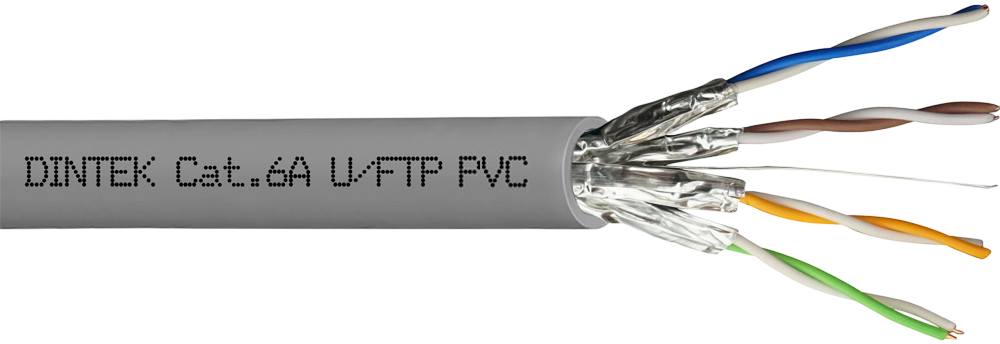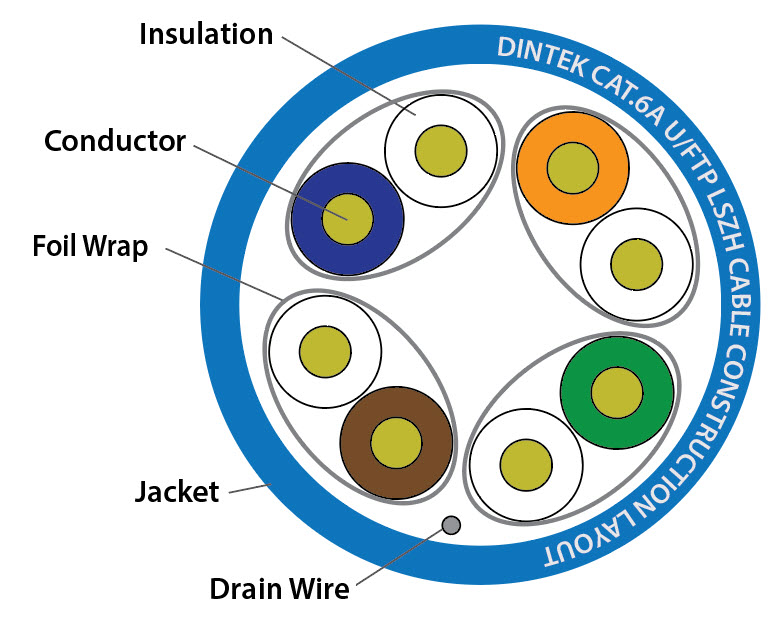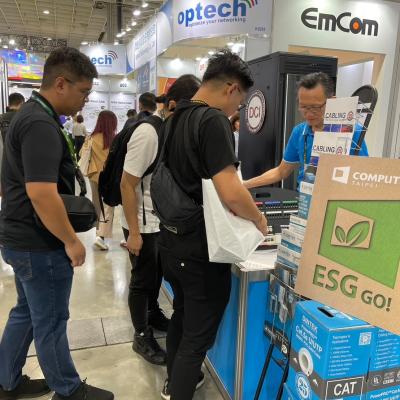F/UTP vs U/FTP:
Choosing the Right Shielded Cable
for Your Network


Among the most common shielded configurations are F/UTP (Foiled with Unshielded Twisted Pairs) and U/FTP (Unfoiled with Foiled Twisted Pairs) — each offering distinct shielding approaches to improve performance and reliability.
Understanding the technical differences between these two cable types can help you select the right solution for your environment, whether you're building out a corporate network, upgrading a data centre, or deploying high-speed connectivity near potential sources of interference.
Shielding Structures: What Sets Them Apart?
F/UTP (Foiled/Unshielded Twisted Pair)
F/UTP cable includes an overall foil shield that wraps around all four twisted pairs as a group. The individual pairs themselves are not shielded.
Key Features:
Overall protection from external EMI
Internal pair-to-pair crosstalk is reduced but not eliminated
Typically more flexible and easier to install
Slightly smaller cable diameter compared to U/FTP
U/FTP (Unfoiled/Foiled Twisted Pair)
U/FTP cable provides a foil shield around each twisted pair individually, with no overall outer foil or braid. This design delivers superior isolation between pairs and excellent protection from both external interference and alien crosstalk.
Key Features:
Outstanding noise rejection and AXT performance
Reduced internal crosstalk for higher transmission integrity
Slightly bulkier and less flexible due to multiple foil layers
Ideal for 10GbE and high-frequency applications
When to Use Each Shielding Type
F/UTP is Best Suited For:
- Office environments with moderate EMI (e.g., fluorescent lights, HVAC systems)
- Horizontal cabling runs in structured cabling systems
- Applications where cost, flexibility, and ease of installation are priorities
- Network speeds up to 1Gbps or 10Gbps over shorter distances
U/FTP Is Best Suited For:
- High-density environments (e.g., data centres, server rooms)
- Installations near power cables, machinery, or wireless equipment
- Deployments of 10GBASE-T over full distances (up to 100 metres)
- Situations where maximum EMI and AXT protection is critical
Shielding Isn't Everything - Grounding is Critical
Shielded cabling requires proper grounding to be effective. Without appropriate grounding and bonding, shielded cables can act like antennas — picking up interference rather than deflecting it. Always follow industry standards such as ANSI/TIA-607-D or ISO/IEC 11801, and use shielded connectors, patch panels, and outlets to maintain full continuity.
PowerMAX500 Cat.6 and PowerMAX+ Cat.6A F/UTP cables
DINTEK’s shielded PowerMAX500 Cat.6 and PowerMAX+ Cat 6.A F/UTP cables offer robust, high‑performance solutions for both enterprise and industrial environments. With foil shielding, solid 23 AWG copper conductors, and compliance with ANSI/TIA and ISO/IEC standards, these cables ensure low crosstalk and EMI, with Cat.6A supporting full 10 GbE over 100 m and featuring fire‑safe LSZH or outdoor‑rated jackets.
They are ETL/UL‑verified and designed for easy installation—including EZI‑Pull reels and gel‑filled options—DINTEK makes it easy to build future‑proof, reliable network infrastructure.
PowerMAX500 Cat.6 and PowerMAX+ Cat.6A U/FTP cables
DINTEK’s shielded PowerMAX Cat.6 U/FTP and PowerMAX+ Cat.6A U/FTP elevate network resilience by wrapping each twisted pair in foil, dramatically reducing interference. Cat.6 suits rugged outdoor or industrial runs with UV-, moisture-resistant jackets, while Cat.6A, hitting 500 MHz and full 10 GbE over 100 m, is the backbone-of-choice for high-density, future-ready installations—complete with fire-safe LSZH options.


DINTEK F/UTP vs U/FTP Cable Comparison
Feature | F/UTP | U/FTP |
|---|---|---|
Shielding Design |
Overall foil shield wraps all pairs together
| Each pair is individually foil-shielded |
EMI Protection | Good protection from external interference | Superior EMI & crosstalk protection |
Crosstalk Control | Moderate control (especially for Cat 6A) | Excellent control of near-end and alien crosstalk |
Flexibility | Slightly more flexible for installation | Slightly stiffer due to individual foil around each pair |
Performance (Cat.6) | Up to 250 MHz; Gigabit & medium-run 10 GbE | Up to 250 MHz; similar performance but improved noise handling |
Performance (Cat.6A) | Up to 500 MHz; full 100 m 10 GbE | Up to 500 MHz; full 100 m 10 GbE with better AXT suppression |
Best Use (Cat.6) | General office LANs, industrial EMI zones, modest backbone runs | Outdoor aerial runs, industrial use, environments with machinery/EMI |
Best Use (Cat.6A) | Data centers, enterprise backbones, PoE++ installations | High-density cabling areas, data centers, PoE++ and future-proofing |
Jacket Options | PVC, LSZH, PE (outdoor) | PVC, LSZH, PE (Cat.6 outdoor) |
Installation | Easier to handle and terminate | Slightly more effort to terminate; better for structured long-term runs |
Conclusion
Choosing between F/UTP and U/FTP cables comes down to your environment, performance goals, and budget. F/UTP is a solid choice for general use where moderate shielding is sufficient. For installations requiring top-tier data integrity and EMI protection — particularly at higher speeds — U/FTP provides a future-proof solution.
By understanding the benefits and limitations of each shielding type, you can confidently select a cable that ensures signal performance, system reliability, and long-term scalability.









